On a blizzardy January day, hardly any other visitors cross my path in the barrel-vaulted corridors of the University of Pennsylvania Museum of Archaeology and Anthropology in Philadelphia. The Penn Museum, as it is commonly known, occupies an Italian Renaissance brick compound tucked beside unmemorable hospital buildings at the outskirts of the university campus. I snake past stone Buddha heads and seated pharaohs, mosaic bird silhouettes made for ancient Syrian homes, human skulls collected in Peru by 19th-century craniologists and chunky silver anklets from Ethiopia. The unusual, weather-inflicted solitude hush in the museum’s cavernous halls makes me feel, somewhat fittingly, like an explorer coming upon treasures long unseen.
The museum’s collection of a million objects represents pretty much everything humans have ever made on every continent. The Native American displays, for example, span from chalcedony blade tips carved in New Mexico about 10,500 years ago to 19th-century lacrosse sticks, and recent photographs documenting Midwestern burial mounds partly subsumed under golf courses.
Many of the highlights of the collection, such as the royal possessions unearthed at Ur in what is modern-day Iraq, were brought to Philadelphia in clusters by archaeological expeditions financed by the university in the late 19th and early 20th century.
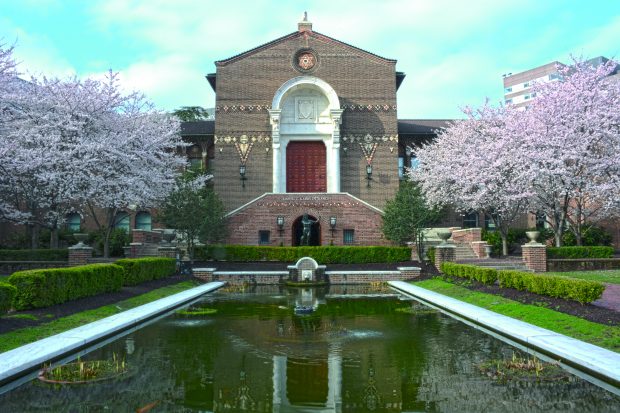
The main Kamin entrance and the Warden Garden of the Penn Museum. In front of the entrance stands a reproduction from 1903 of the Borghese Satyr. Photo: courtesy Penn Museum
Normally, when snow has not brought most of the campus to a standstill, the museum bustles with academics, students, locals, and tourists. Attracting audiences from outside the university’s walls has been the goal of the institution since it was founded in 1887. ‘It’s an act of generosity to the city,’ Julian Siggers, the museum’s director, tells me. Siggers and a dozen staff members (there are more than 100 full-timers) fill my day with tales of the museum’s adventurous founders, early philanthropists, and details of the hugely ambitious campaign to reconfigure the displays, update interpretations, and undo unsightly old repairs.
The refurbishment programme is being completed in phases. In April this year, highlights from the Ur digs will become the centrepieces of new galleries devoted to eight millenniums of civilisation in the Middle East. The displays will explore how neolithic vintners in what is now Iran stored wine in bulbous ceramic jars; how Sumerian scribes wrote poetry on cuneiform tablets, as well as legal contracts that fostered trade and urbanisation; and how 17th-century Safavid weavers could work with more than a dozen colours of thread at a time. Immigrants and refugees from nations represented in the galleries will be among those working as docents, through a new programme called Global Guides.
The museum will also refresh its displays of Central American and African material in November 2018 and September 2019, respectively. Also in the autumn of 2019, entire Egyptian rooms used for worship and mourning will have been reconstructed out of archaeological salvage that measures up to 24 feet tall.
There is nothing unique about an American university museum collaborating with many academic departments within the institution, sending staff far into the field, and collecting omnivorously. Harvard and Yale, for instance, have been good at that for a few centuries. The Penn Museum nonetheless stands out in terms of square footage (340,148), annual budget ($24 million), architectural grandeur, and visitor numbers (180,000). In its lively public programme, pre-schoolers learn to craft interpretations of the African masks on display; pre-teens hold sleepovers alongside a faceless granite sphinx that weighs 13 tons; visually-impaired visitors are allowed to handle Roman coins and trace hieroglyphics.
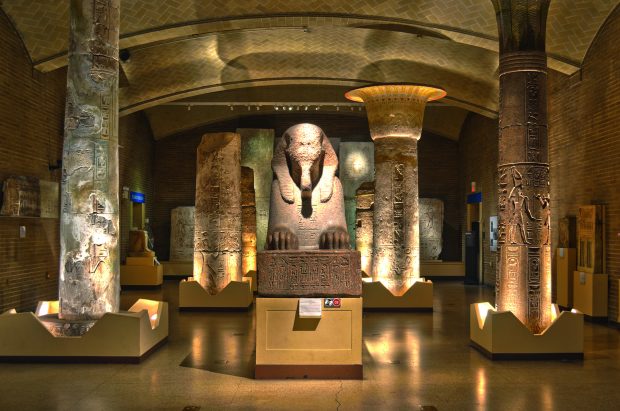
In the Egypt (Sphinx) Gallery, is a granite sphinx carved from the sacred enclosure of the temple of the god Ptah (19th Dynasty, c. 1293–1185), and pillars from the palace of Merenptah. Photo: Penn Museum
The museum participates in dozens of digs and cultural documentation efforts each year, from Guatemala to Azerbaijan, and helps preserve and teach indigenous languages and traditions. It pitches in for emergencies in conflict zones; in the last few years it has been part of an international consortium helping to lay out swathes of sandbags to protect the Ma’arra Mosaic Museum in Syria, about 50 miles south of Aleppo, and which has been at constant risk of bombings and looting.
There is a long tradition of scholars and scientists collecting for the public good in Philadelphia. The city is home, for example, to the American Philosophical Society, which was co-founded by Benjamin Franklin in 1743, and is considered the country’s oldest museum. The University of Pennsylvania also dates its founding to the 1740s. In 1779 it was the first institution in the United States to be named a university.
In 1887, William Pepper, the provost of the university, was persuaded by John Punnett Peters, a professor of Semitics, to help fund an expedition to Mesopotamia. Peters already had the backing of a Philadelphia banker called Edward White Clark, and other leading figures in the city helped finance the project. The university gave its support on condition that ‘all finds which can be exported are to […] become the property of the University of Pennsylvania, provided the said University furnish suitable accommodations for the same in a fire-proof building’. The dig conducted at the ziggurat ruins at Nippur – a Sumerian centre of worship – in modern-day central Iraq, was the first large-scale American archaeological expedition in the Near East. Peters’ teams brought back 25,000 artefacts, including cuneiform tablets, limestone funerary statues of bejewelled matrons acquired from Peters’ visits to Palmyra, and ceramic bowls inscribed in Hebrew.
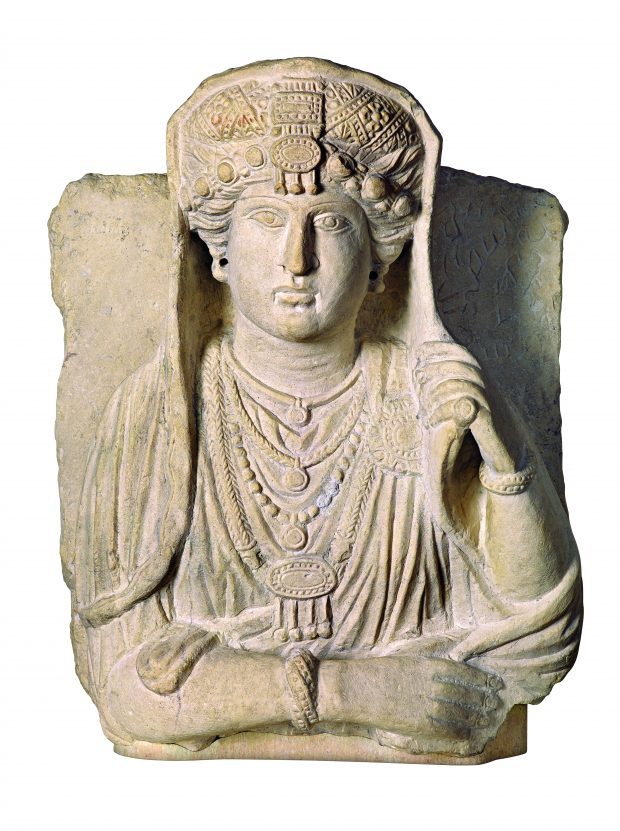
Sculpted portrait of an elite Palmyrene woman (3rd century AD), Syria, Palmyra. University of Pennsylvania, Museum of Archaeology and Anthropology. Photo: courtesy Penn Museum and Dorling Kindersley
In his memoir of 1897, Peters recalled that his team had to keep warding off plunderers. His workers covertly transported some antiquities ‘in detachments by boats through the marshes’. The region’s marketplaces were full of hazards, too; he rejected numerous objects for sale with ‘forged Phoenician inscriptions, which seem to be manufactured there to satisfy the tourist demand’.
When the finds from Nippur first reached Philadelphia, the university displayed them in temporary galleries on campus. But Pepper managed to persuade the university leadership to acquire land for a freestanding museum. The plans were still on the drawing table when he died in 1898, at the age of 54, while convalescing from an illness in California with his friend Phoebe Hearst, the mother of the media magnate William Randolph Hearst. (She would later finance the museum of anthropology which was named after her at the University of California, Berkeley.) The original proposals for the Penn Museum’s gabled and domed complex, by various Philadelphia architects led by the versatile and fashionable Wilson Eyre Jr., were grandiose to say the least. Siggers keeps one of the original renderings in his office suite; the complex of multiple rotundas and courtyards would have sprawled across nine acres. Siggers has also hung a painting by the Turkish artist, curator, and administrator, Osman Hamdi Bey, which shows a bird’s-eye view of Nippur thronged by workers and curiosity seekers.
A series of Gilded Age intellectuals made idiosyncratic additions to the collection. The museum’s holdings of German playing cards originally belonged to Francis Campbell Macauley, an archaeologist and scholar of Romance languages; writing implements made of Persian lacquer came from the Egyptologist Sara Yorke Stevenson; Roman cameos were donated by the glyptologist Maxwell Sommerville, and Moroccan lutes were donated by Sarah Sagehorn Frishmuth, a collector of musical instruments.
The construction of the museum’s galleries proceeded in phases until the Great Depression. Only a third of the original vision was realised, but there are several moments of grandeur and luxury. A tiled dome rises 90 feet above a cylindrical hall devoted to Chinese art; elsewhere, coffers with chinoiserie motifs are set into the domed ceiling of a subterranean theatre. The museum’s exterior and its grounds are studded with allegorical stone figures carved by Alexander Calder and with iridescent mosaics of animals and floral bouquets made at Louis Comfort Tiffany’s workshop in New York. These pre-war marvels survived the rush to demolition and large-scale acts of deaccessioning that wounded many other American university museums in the late 20th century. In the 1970s the Penn Museum did add a few concrete wings and passageways in brutalist style, but without disfiguring the original brick façades.
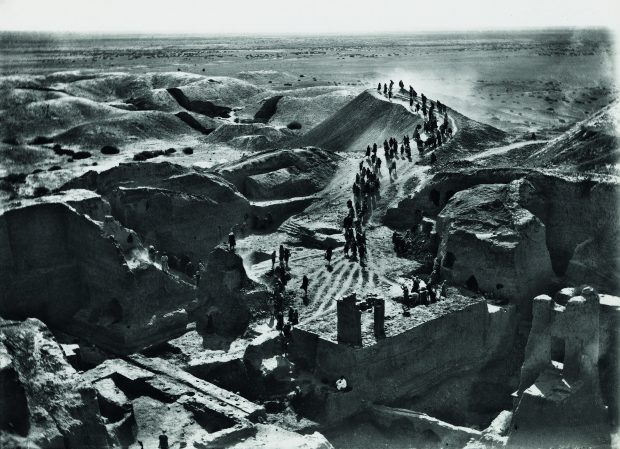
Photograph of the excavation of the Temple enclosure at Nippur, viewed from the top of Ziggurat, taken by John Henry Hayes, 15 August 1899. Photo: courtesy Penn Museum
Over the years, administrators have packed the museum with offices, storerooms, classrooms, and state-of-the-art labs. I peer into a lead-lined room where X-ray equipment has revealed hammering marks on Sumerian gold diadems, and the configurations of bones inside the wrappings on Egyptian animal mummies. Marie-Claude Boileau, the laboratory coordinator for the museum’s Center for the Analysis of Archaeological Materials, sets up a high-powered microscope for me, revealing dazzling polychrome sand grains in a caramel-coloured speck of a Cypriot ceramic vessel from the late Bronze Age. There are even ancient Peruvian seeds on hand for staff and students to inspect closely: ‘Lima beans, corn, peanuts, we’ve got it all,’ explains William Wierzbowski, the keeper of the American section.
Conservators tell me about their latest analyses of pieces that were repaired by well-intentioned forebears. For instance, adhesive patches from the 1970s on an Archaic Greek vase by Exekias have had to be removed; they were shrinking, thus causing cracks and destabilising the vessel. Equally problematic are some of the reinforcements that the British archaeologist Leonard Woolley improvised at Ur in the 1920s, in modern-day southern Iraq. Woolley led a joint expedition for the Penn Museum and the British Museum. Both institutions had conducted digs there before the First World War and thriftily decided to combine resources in a land that had just come under British administration. The team shared their finds with the Iraqis – a new concept for Western archaeologists, who, as in the case of Peters, had been accustomed to taking away whatever they could carry. Woolley sent some of the most important Ur finds, created about 4,500 years ago, to the Penn Museum: a jewelled gold headdress and beaded cape, worn by a Sumerian queen named Puabi, and a golden goat balancing on its hind legs to nibble leaves along a thorny tree trunk. The environs of Ur yielded temple columns that are inlaid with triangular and diamond-shaped chips of stone and mother of pearl; they look almost art deco to contemporary eyes. Lynn Grant, the museum’s head conservator, tells me that Woolley wrapped the tesserae around chunks of ‘chicken wire, burlap and plaster.’ Her team has replaced those now failing substrates with inert foam cores. A hollow copper alloy bull, which Woolley had filled with wax and raw cotton, has acquired a new metal armature plus sturdy doses of epoxy putty and acrylic resin.
The museum’s senior archivist Alessandro Pezzati (who invites in the public for weekly question hours) lays out tables full of the museum founders’ documents and drawings for me. On 4 January 1928 Woolley sent the museum a telegram alerting it to his discoveries. He wrote it in Latin, to keep the news from spreading too readily.
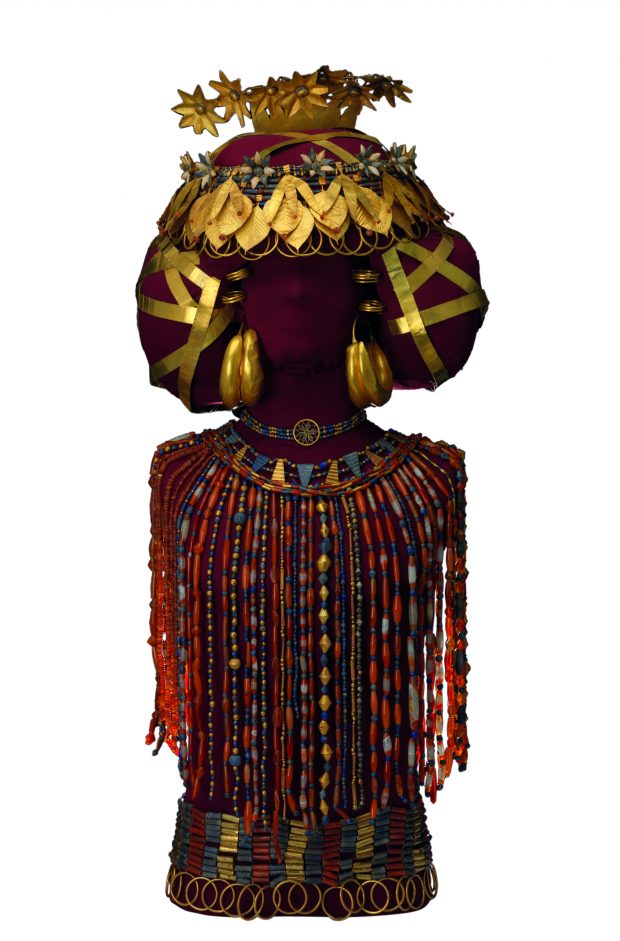
Queen Puabi’s headdress, beaded cape, and jewellery from the Royal Cemetery of Ur, (c. 2450 BC), Sumerian. Uni
Pezzati brings out a copy of Agatha Christie’s novel, Murder in Mesopotamia (1936). Christie knew Leonard Woolley and his wife Katharine and had been to Ur. It was there that she met her second husband, the archaeologist Max Mallowan. The novel’s irascible, moody and narcissistic murder victim is based on Katharine, who is said not to have minded her portrayal.
The files are full of stories about other colourful figures. ‘You could keep going here, days and days,’ Pezzati says. He rattles off entertaining mini-biographies of world traveller M. Louise Baker, Woolley’s favourite illustrator of ruins and artefacts; Tatiana Proskouriakoff, a pioneering decipherer of Mayan hieroglyphics; and the underwater archaeologist George Bass, who fitted out a two-person submarine in the 1960s to dive for ancient bronze statues in shipwrecks off the coasts of Greece and Turkey.
We hardly touch upon Maria Czaplicka, a Polish noblewoman who trekked across Siberia in wintertime to document tribal peoples; Zelia Nuttall, a San Francisco native who spent decades tracking down lost Mexican codices; Harriet Boyd Hawes, a Bostonian who lectured widely about her adventures as the first woman supervising all-male crews at Minoan digs on Crete; or the Asian antiquities dealer C.T. Loo. Depending on your point of view, the latter either rescued objects from tumultuous regions (sometimes without asking too many provenance questions) and fostered the interest of Western curators in Asian art – or ransacked his own country. The museum’s pair of Tang Dynasty horse reliefs (part of a set of six) are considered by some to be the finest outside China.
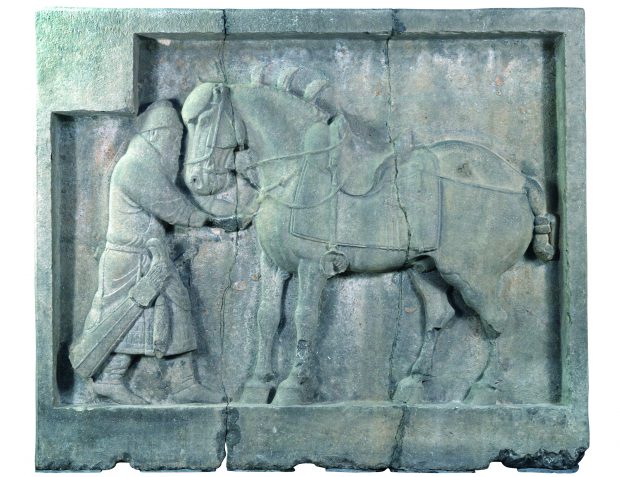
One of six reliefs commissioned by the Emperor Taizong, China, Tang Dynasty (618–906 AD). University of Pennsylvania Museum of Archaeology and Anthropology, Philadelphia. Photo: courtesy Penn Museum and Dorling Kindersley
A polychrome tomb chapel built near modern-day Giza in the third millennium BC will be reconstructed; in 1904, it made a stopover at the world’s fair in St. Louis on its way to Philadelphia. The chapel’s limestone blocks are eroded and flaking, and conservators are injecting consolidants into each endangered chip. The museum’s most massive stone slabs and columns come from the Palace of Merenptah, built some 3,500 years ago near Giza (where the faceless sphinx was also found).
Until now, no room at the museum has been both sufficiently strong and large enough to accommodate the chapel. But the flooring and walls in an upstairs gallery are currently being reinforced, so the Merenptah parts can be stacked to reach their original height. The room, Siggers says, ‘is going to be one of the great museum jewels of America’. (Its principal rival will be the Metropolitan Museum of Art’s Temple of Dendur.)
Siggers and the deputy director Stephen J. Tinney also take me through back corridors, entryways, and stairwells, pointing out where unglamorous, but important features, such as new elevators, restrooms, lighting systems, acoustic improvements and climate-control devices, will be tucked away. The museum will remain open throughout the renovations, so that significant parts of the collection are still available to visitors at any one time, and so that pre-schoolers can keep making African-inspired masks and pre-teens can gossip sleepily at a sphinx’s feet.
Tinney, who is an Assyriologist, tells me that in the last decade, archaeological sites in the Middle East that he has studied have been blown up, others looted, and some left oddly untouched. Half a million cuneiform tablets are safe in public and private collections, and the quantity still buried ‘is probably mind-boggling’, he says. As we approach the faceless sphinx, he confesses that he is a cat person. He points out the delicate arc of the lines on the granite paws. An ancient stone carver has carefully represented the contours of retracted claws, the hidden weapons of a creature that has crossed the seas.
From the February 2018 issue of Apollo. Preview and subscribe here.
Unlimited access from just $16 every 3 months
Subscribe to get unlimited and exclusive access to the top art stories, interviews and exhibition reviews.

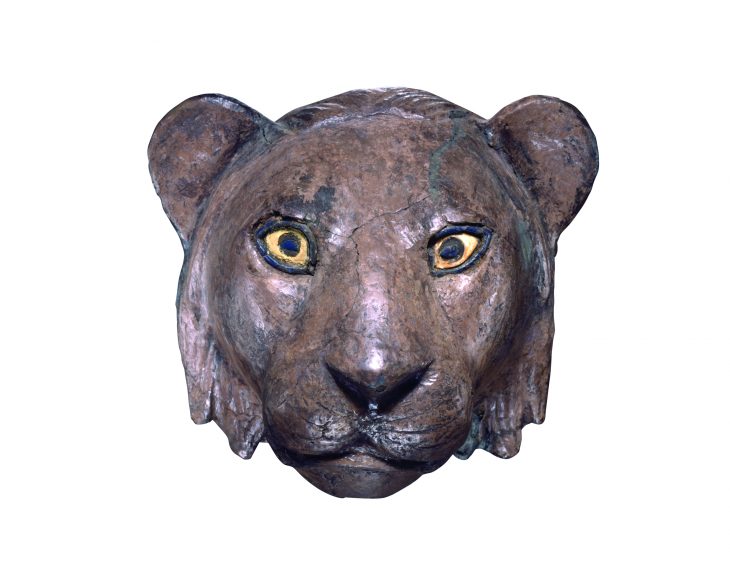
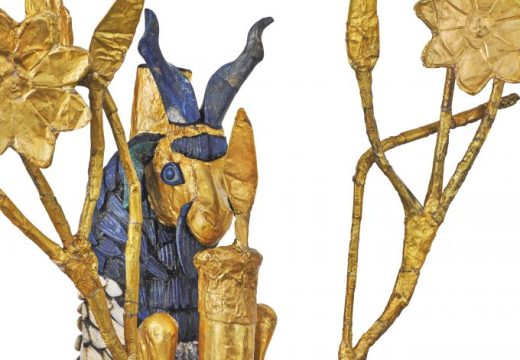
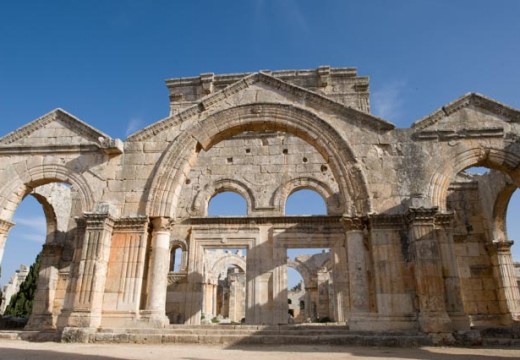
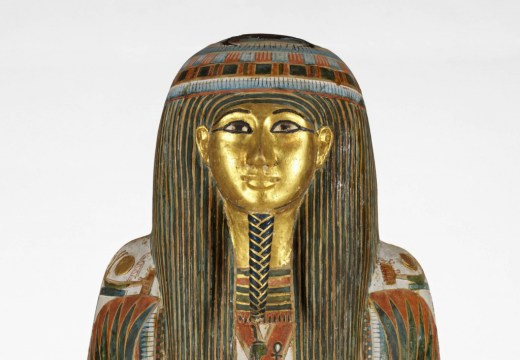









![Masterpiece [Re]discovery 2022. Photo: Ben Fisher Photography, courtesy of Masterpiece London](http://www.apollo-magazine.com/wp-content/uploads/2022/07/MPL2022_4263.jpg)
Why are fathers so absent from art history?